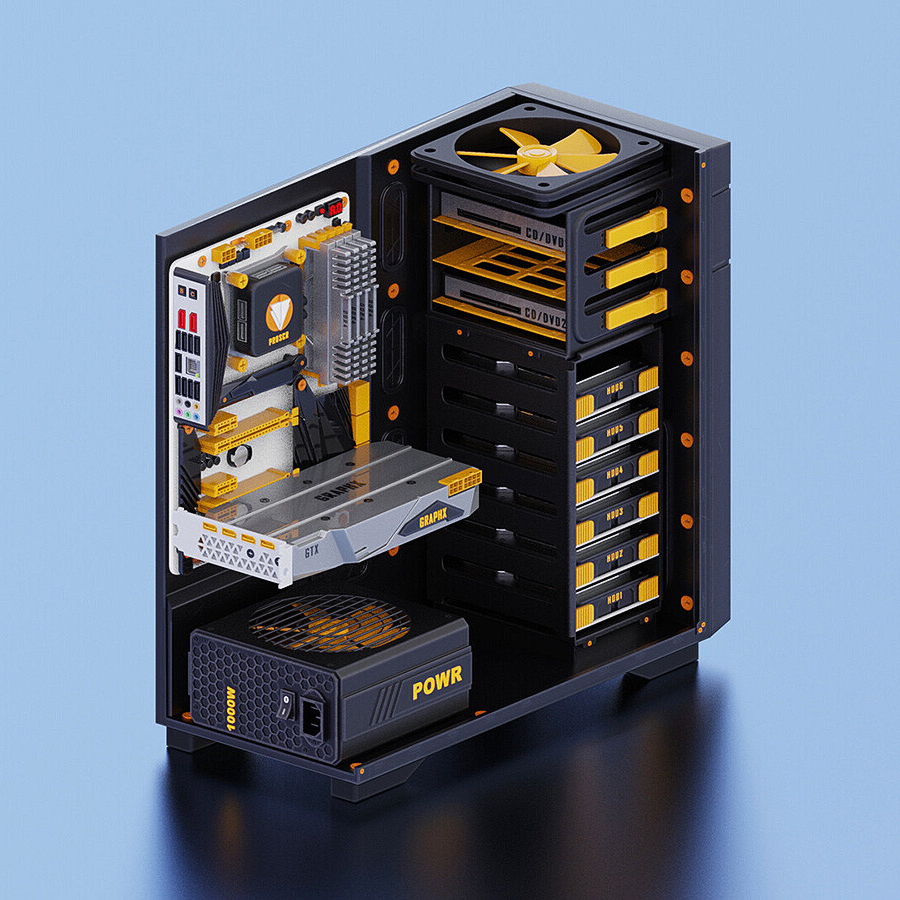So a republicans house is just this but every room is labeled guns?
- 5 Posts
- 70 Comments

 13·6 days ago
13·6 days agoDoesn’t Windows 10 already do that? I could never get the freaking thing to leave my files behind and disable itself.
Windows 10 LTSC for the win if you have software you can’t yet abandon.

 96·6 days ago
96·6 days agoUr tolling right?
I’m both. Somehow. I apparently switch between them.

 3·2 months ago
3·2 months agoMy solution is RAIDZ5 and storing the backup on LTO6 tape with parity/erasure code. I think the fact that scrub times take 24 hours even on 16TB drives is already over the safety margin. If a drive failure happens, the first thing I’ll do to run a manual diff backup which should take a fraction of the time and then run the ZFS resilver.
I’m beginning to see why SSD RAID is being considered now. My guess for HDDs in enterprise is that a RAID 15 (I made this up) would be considered. What I mean is data is stored on two identical servers each running RAID5 or 6. Off the shelf solutions like Gluster exist and that seems to be gaining traction at least according to Linus Tech Tips.

 8·4 months ago
8·4 months agoIf your computer is incapable of even running Ubuntu. Then I don’t think it’s worth using.

 33·4 months ago
33·4 months agoCool. So you can no longer turn your phone off.

 9·4 months ago
9·4 months agoYou know what’s funny. I was investigating the hardware datasheets for the PinePhone and looking at the RTC module and just like PC RTC chips there is an option to trigger an interrupt/power on when a certain time is met. That means that there appears to be no reason this couldn’t be a current feature on probably all modern smartphones. Just lack of software support.

 2·4 months ago
2·4 months agoWell I’m in my mid 20’s so I’m hoping for at least that long :). No I won’t likely need alot of what I store to last that long although I am a member of r/DataHoarder (not sure if they’re on lemmy yet) but for a few items like family photos/videos it’s nice to have it written in a way that I can mostly just set and forget. With the standardization and open source implementation of LTFS you have even less worry about having the software to read it in the future. A SAS IT mode HBA and linux with a git clone of the LTFS repo is all you need.
In terms of cost the drive was very expensive ($2500 NOS from eBay US) but if you treat that as the one off entry cost, the tapes are cheaper for me to buy than the equivalent in HDDs here in Australia. That’s comparing ~$460 20tb EXOS HDDs from serverpartdeals.com to $43 x 8 = $344 2.5TB LTO-6 from stutchdata.com.au.
Also I store the tapes in IP67 boxes from bunnings along with a pack of desiccant and put the boxes in a cool but damp area. Don’t really have alot of choice where I live. It’s either that or hot daily temperature swings. Basement vs attic/garage.
I hope that’s enough to store them correctly environmentally speaking. I am in the process of working out how to clean family VHS tapes that were not stored correctly and that’s not an operation I want to revisit. An extended project is to make 900mhz button cell humidity/temperature monitors to notify me when desiccant has expired.
This may seem excessive but I would argue most don’t do enough in an age where more and more is being stored digitally as the only copy rather than print, etc. I feel this is a small price to pay to keep the still more compact and convenient all digital lifestyle without the data loss issues most people experience. The drive was expensive to buy into but with how little I use it I hope it’s going to last a long time.

 2·4 months ago
2·4 months agoThere is one on the Wikipedia page.
https://en.wikipedia.org/wiki/DVD-RAM
Due to the caddy nature I believe there were plans or limited availability of double-sided disks. That would have made it so much more appealing I think.

 2·4 months ago
2·4 months agoYea but the tape is likely to last the 20-30 year estimate. You couldn’t say the same about HDDs especially the helium sealed ones.
Whether the tape drive will survive as well is another question but between the simpler mechanism, a drive 2 generations ahead can still read the tape, parts inter-compatibility if you needed to frankenstein an older drive with new rollers and motors and just plain buying and keeping drives sealed in storage as new-old-stock ahead of time. You have a few options to choose from.
Where as with HDDs you may have to repair each one. The helium ones you may have to re-gas.
Tape sounds like a better long term archival/backup approach.

 1·4 months ago
1·4 months agoBelieve it or not, first gen DVD-RAM came exactly like this. But manufacturers cheaped out / wanted the drives to be more easily compatible with CDs. So the caddys were scrapped.

 1·4 months ago
1·4 months agoAnd then unsolved as of late by manufacturers cheaping out.
I have the Valve Index and my game plan is that I have a soldering iron and the Aliexpress link ready to go. I have not owned it long enough to know how good or bad the life span is yet though. Just based off the rumors I looked into how to get the stick replacement before buying.
It’s silly to be an absolute open source purist when it comes to Valve anyway. They arguably deserve the money for the amazing ecosystem they have compared to the competition and are one of the biggest contributors to getting GUI frameworks and other Linux systems developed for the Linux based steam deck.
Valve will likely be the party that gets VR working mainstream on Linux for the upcoming Valve Decard standalone headset. You want to talk about the power of open source… well… an affordable VR headset that’s at least mostly open source in the software department that is also good for gaming. Sign me up. It’ll be miles better than what Facebook shits out for it measly 3-4 years of support.
I have an OG Vive that I use as the multiplayer setup for when friends come over and it’s still fully supported. 8 years later.
Valve may not be completely committed to everything open source but until someone out shines them they are the best option for flexibility and longevity.
Also someone need to be paid to develop open source software. This being the beginning of the topic and all. I’m happy for that to be Valve at the moment as they have shown the industry how to be better.
No I don’t work for Valve, I’m just sick of closed restrictive platforms as well as open janky platforms for gaming and hardware with fixed EOL dates. I see Valve as the best balance/compromise.
Sorry for my brains wall of text mode.
Steam is my dirty little secret when it come to my interest in open source. I believe that Valve will continue to hold it’s long tradition of user first business as a private business with lord Gaben at the helm (yes I know he’s mostly in the background at this point). I know that GOG exists however I really like steam forums, achievements, steam deck integration, steam link streaming and most importantly steamVR. Buying through GOG is going to massively impact my steamVR experience if you can even at all. steamVR compared to Oculus makes steamVR look like a very open platform. I hate Facebook with a passion for a variety of reasons so steamVR it is.
FOSS is a great tool/concept but at this time it doesn’t apply to gaming and I don’t really care to massively inconvenience my gaming experience for a small amount more of open source code. I say this as someone who daily drives a PinePhone, runs a Linux server with ZFS and is looking at a Framework laptop for my next laptop to run Linux on. Windows is still where gaming is at, especially for VR, and I don’t care to try and fight to run close source games on an open source operating system. Seems like a waste of effort to me.
I should add that I am broke myself so it’s a bit high and mighty of me to say people should donate when I have not done so yet.
I have started by at least supporting game developers on Steam. Mostly indie to medium size studio ones. Again, I can’t stand the AAA game DRM key crap.
I am interested in paying donations to free and open source software I regularly use and have into my workflow. I will completely ignore your project if you make me deal with license keys. The Grayjay method is ok but would prefer that code and buttons not be dedicated to getting in my way. I hope that the mentality of paying for what you use becomes more common in FOSS culture so that prompts aren’t needed.
That said if your broke, don’t dontate. Take advantage of it being free and when you get a good job again, then consider helping out the developers.
In recent personal experience, I recently changed the motherboard on my Winblows VR gaming PC and It wouldn’t recognize my legit product key anymore. I don’t have patience for DRM shit so I activated it with KMS. Activation keys are a pain in the arse.
I emphasized It’s use for VR gaming just in case someone tries to sell me on the Linux Proton compatibility system. Someday soon steamVR will hopefully have good compatibility and I will give it a go. However I will always at minimum be stuck with windows on a secondary ssd as I have some Oculus games I also like and Oculus+revive will likely never work under Linux.

 1·5 months ago
1·5 months agoWhere do I get the keyboard as a part from? I bought a keyboard from a seemingly branded seller on Aliexpress and the keyboard was really shit. The spacebar didn’t balance at the edges and all the key felt mushy.
I also bought a battery from iFixit and got two warranty replacements and not a single one lasted more than a few hours before bricking itself. As in the battery still measured a voltage and it could keep the ram contents in sleep but the controller/battery info no longer showed up in macOS.
I can do these repairs as difficult as they are but where do I actually get the parts from?







Then you’re really not doing that much research. I can easily open 20 to 50 tabs for just one project. I’m not defending leaving them open. I’ve finally started to address the problem by learning how to take notes. I chose Joplin for this.
Autism/ADHD is a bitch for some things and note taking and writing up research has never just “come to me”.